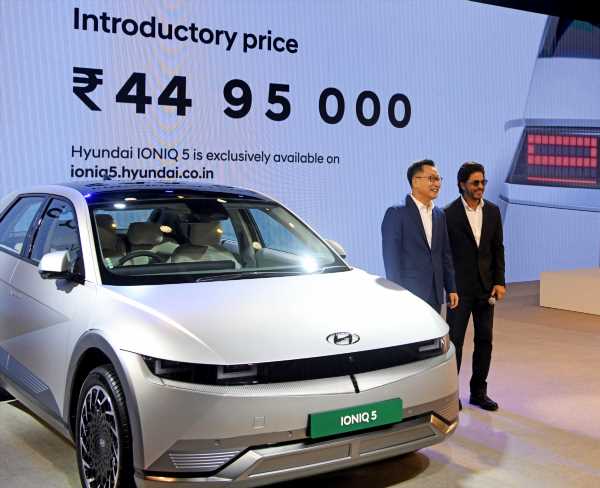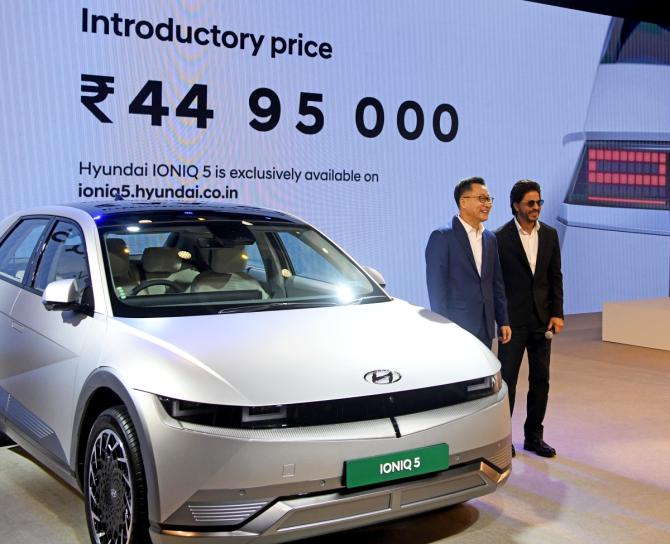‘India has far exceeded our expectations in EVs’
‘The Indian govt’s initiatives on EVs are very strong and customers want to buy EVs. This will make the country’s conversion to EVs faster than other markets, and I hope even faster than the US.’
Following the launch of the new Verna recently, Hyundai Motor India CEO and Managing Director Unsoo Kim talks to Surajeet Das Gupta about the reasons behind the firm’s big push in sedans and its game plan in electric vehicles.
Every car maker has been focusing on the high- growth SUV segment for the last few years. What made you come out with a different strategy and launch the new Verna in the sedan segment?
The trend towards SUVs is global. It is happening in the US and now also in Europe, which has been a hatchback market.
In 2022, however, apart from SUVs, only the sedan segment increased its contribution to the total sales.
In 2021, 296,000 sedans were sold, accounting for 9.5 per cent of the total market.
In 2022, it rose to 412,000, which is 10.4 per cent of the total market, reflecting 40 per cent growth.
Indians aspired for sedans, but reputed brands were focused on SUVs.
Our target is to double the sales through the new Verna, currently at 19,000, in the next 12 months.
So who is the new Verna customer and how is he or she different from the SUV user to justify a fresh Verna launch?
There is a key difference between the Verna customer and the SUV Creta customer.
In the case of Verna, 41 per cent of the customers are less than 30 years old, whereas in Creta, the corresponding figure is only 20 per cent.
So Verna customers are younger and more focused on exterior styling and internal space, which are key factors.
We expect 25-26 per cent of the new Verna customers to be first-time buyers.
In the case of the older Verna, it was around 20 per cent, while for Creta it is 21 per cent.
The enthusiasm can be seen from the fact that while bookings opened one month ago and the price was announced only now, we have already received 8,000 bookings.
Out of this, about 25-30 per cent was for the turbo option, which offers the best performance.
Hyundai is seen as a key player in the electric vehicle (EV) space in India. What is your EV road map for the country?
We want to be the number one EV player in India.
After Tesla, the Hyundai Group is very good in the EV space.
India has far exceeded our expectations in EVs.
Earlier, many had projected that India will go slow on electric vehicles. But the Indian government’s initiatives on EVs are very strong and customers want to buy EVs.
This will make the country’s conversion to EVs faster than other markets and I hope even faster than the US.
Hyundai has already announced that it will launch eight EVs by 2028 (its first EV was the Kona) in all segments — hatchback, sedan, and SUV, among others.
The government’s target is that 30 per cent of all cars in India should be electric by 2030, while conservative estimates say that it will be 15 per cent.
We believe 20-25 per cent is possible by 2030.
Also, with more localisation, availability of cells for batteries — the production-linked investment (PLI) scheme for batteries will pay off in 2025-26 — the PLI scheme for automotives, in which Hyundai is a participant, and infrastructure progress, will all augment the growth of EVs towards a 30 per cent penetration.
What has been the response to your second EV, Ioniq 5, which is being offered at an introductory price of Rs 44.95 lakh?
It has been far more than our expectations.
We have bookings for 800 plus vehicles and the deliveries will start from early April.
It is not a completely built unit (CBU), but is being manufactured in India. I think we can sell more of them.
Do you see electric cars being available in the sub-Rs 10 lakh range? Some competitors have priced theirs at that range already.
It will depend on battery cell prices. Global prices go up and down due to the prices of raw materials.
Also, as the technology grows, the price of battery cell will go down.
Will Hyundai build its own battery cell manufacturing plant in India?
There are Korean, Chinese and Japanese battery cell makers already, who are major global players.
Some Indian start-up companies are also coming up in this space, and we are focusing on that.
If we increase electric car volumes, there is the possibility for a joint venture with a battery maker. It is happening already in the US and Europe.
With the expansion, you will need to build up more capacity. What are you doing on that front? You are also looking at buying GM’s plant to add capacity.
Yes we are. We have already announced increasing production from 770,000 units to 820,000 units per annum.
India is growing very fast, faster than many other countries, and we will require more capacity to meet the demand.
With the GM plant, your capacity will be at around 1 million. Will that be enough?
We want even more to meet the growth in the Indian market.
Feature Presentation: Rajesh Alva/Rediff.com
Source: Read Full Article




